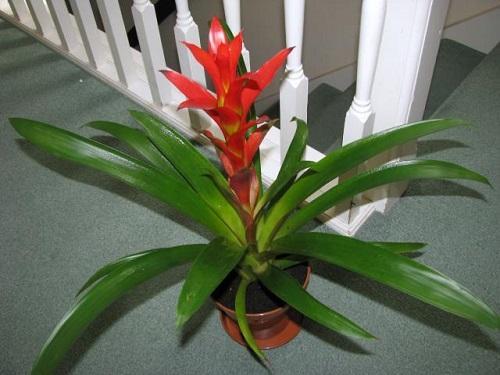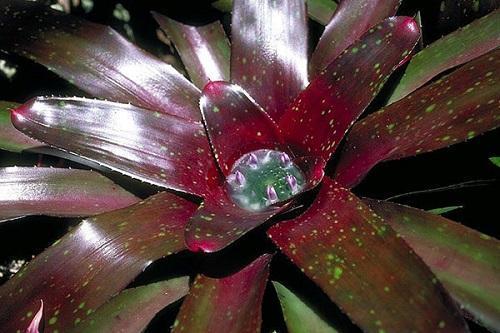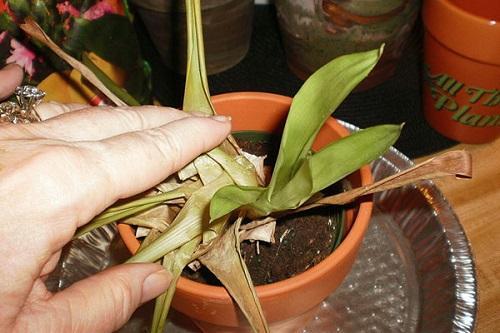How to care for guzmania?
Guzmania belongs to the ornamental evergreens. Outwardly, the flower resembles a bowl of dark green leaves, although some varieties have a variegated color. The leaves are hard and tightly pressed against each other. At home, the flower is rarely more than 40 cm in height. By itself, this bunch of leaves looks quite ordinary and does not attract much attention, however, with the onset of flowering, it miraculously turns. A lush inflorescence of bright color (red, yellow, pink, or orange) appears from the middle of the outlet, which does not fade within 3 months.

Feature Guzmania is that the maternal outlet dies off completely after flowering, forming up to six babies. Therefore, the plant needs constant transplantation.
Taking care of guzmania is not difficult - it is not particularly whimsical in care, however, it has some individual characteristics regarding:
- glaze;
- conditions of detention;
- transplants.
Watering features

The root system of the flower consists of thin short processes and serves mainly to keep the plant upright. Guzmania "drinks" directly from the socket. Warm, settled water, preferably rainwater, should be poured directly into the bowl of leaves. Carefully drain off excess water that has not been absorbed.
During dry summers, some water can be poured into a pan or slightly moistened with potting soil.
From an excess of moisture, the thin roots of the guzmania quickly begin to rot, so they water it in small portions. In summer, watering is carried out every other day, in winter, once a week is enough.
But the flower reacts very well to spraying the leaves, on hot days you can do it every day. To remove dust, the leaves are also wiped with a damp sponge.
Lighting, temperature and feeding
The plant feels comfortable in partial shade, so you can put the pot on a curbstone near the west or east window. If there is too little sun in winter, the flower is rearranged to the south side.
Direct sunlight burns the leaves, causing them to spin at the tips and become stained. Leaves are especially vulnerable after spraying.
Guzmania is a relatively thermophilic plant; in winter it can withstand temperatures up to 16 degrees Celsius (but not lower). Her main enemy is drafts, as a result of which the flower begins to ache.
To feed the plant during the flowering period, use special fertilizers for bromeliads. They are also brought into the leaf rosette.
Transfer

In the third year of life, guzmania blooms, and then dies off. During flowering, several young children are formed with their own root system.

After the death of the parent plant, the children are carefully separated and seated in separate pots. This is how new life is given to the flower. In addition to children, guzmania also reproduces by seeds.